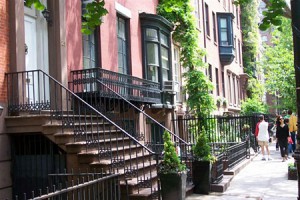Happy Birthday, Marcel Duchamp!
Marvel Duchamp was born in France on July 28, 1887, trained as a painter in Paris until 1905, and spent much of his adult life living in Paris and New York City. His early work was Post-Impressionist, but in 1914, Duchamp introduced his readymades. These common objects, sometimes altered, presented as works of art, had a revolutionary impact on many painters and sculptors.

In his insistence that art should be driven by ideas above all, Duchamp is generally considered to be the father of conceptual art. His refusal to follow a conventional artistic path and disdain for repetition account for the relatively small number of works Duchamp produced during his career. After his brief creative period, Duchamp was content to let others develop the themes he had originated; his influence was crucial to the development of surrealism, Dada, and pop art.

Duchamp’s contempt for conventionalism is reflected in his involvement with the “Arch Conspirators.” In January of 1917, Duchamp and a group of fellow artists (including poet Gertrude Drick; painter John Sloan; and Provincetown Playhouse actors Russell Mann, Betty Turner, and Charles Ellis) entered the inside of the Washington Square Arch’s staircase through an unlocked door, climbed to the top of the arch, and declared liberation for the “Free and Independent Republic of Washington Square” with the intent of having a neighborhood free from mainstream convention. The Daily Plant, the paper of the City’s Parks Department, wrote: “These six so-called ‘Arch Conspirators’ then spread out blankets, hung Chinese lanterns, tied red balloons to the arch’s parapet, sipped tea, shot off cap pistols, and conversed until dawn.” (Read more about the Arch Conspiracy here).
Greenwich Village was a good match for Duchamp’s anti-conventional stance and eclectic persona, but the neighborhood’s unique vibe was not his main reason for moving here in the 1950s from 210 West 14th Street, where he had lived since 1942. The artist moved to 28 West 10th Street to be near the famed Marshall Chess Club, located at 23 West 10th Street. Duchamp had a lifelong passion for chess, even giving up his art career from 1926 to 1934 to play competitively, and traveling to places like Buenos Aires throughout his life to devote time to his hobby.

He later moved to and lived and maintained a studio at the former St. Denis Hotel at 799 Broadway/80 East 11th Street, one of many buildings in this architecturally and culturally rich area south of Union Square which in the mid-20th century became the center of the art world. In fact it was here that he worked until he died in 1968 on his final artwork, Etant Donnes, a room-filling tableau which the viewer was meant to see through two peepholes at either end (click both links for more info and images). Village Preservation fought unsuccessfully to save the building from demolition in 2018, one of many being destroyed in the neighborhood as a result of the tech building boom sweeping through here and the failure of the Mayor and City Councilmember Carlina Rivera and the City Council to demand adequate protections for this area in light of the approval of the Tech Hub on 14th Street. The building is being replaced with a large glass tech office tower.

Today Marcel Duchamp is considered one of the most famous artists of his time and one whose attitude toward art and society changed the future of the visual arts and greatly added to the artistic legacy of Greenwich Village. Happy Birthday, Marcel Duchamp!
Want more? Take the ‘Homes of Great Artists’ tour on our Greenwich Village Historic District 50th Anniversary Map at www.gvshp.org/GVHD50tour. Learn more about the fight to save the neighborhood south of Union Square at www.gvshp.org/savemyneighborhood.
